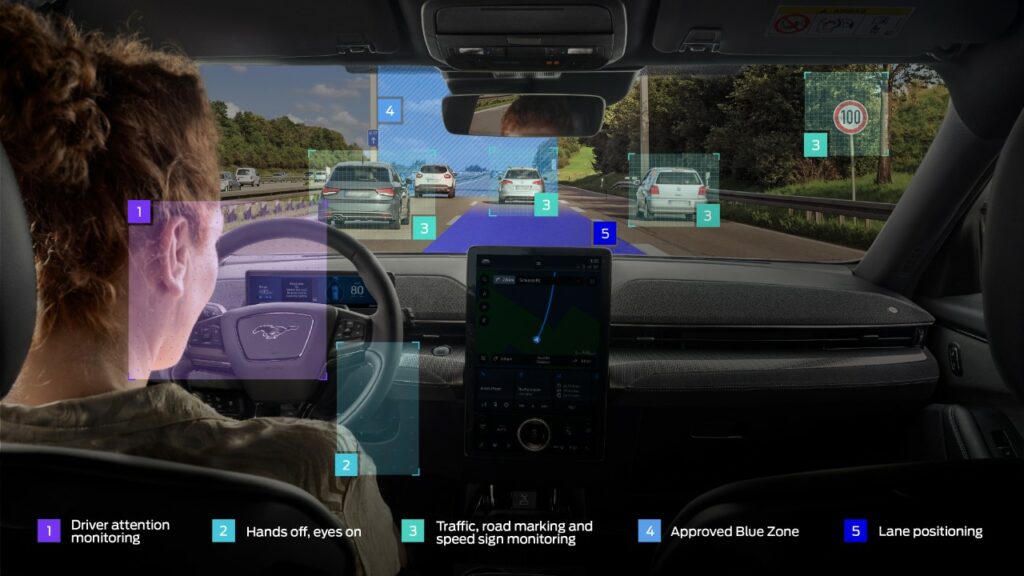European Data Act empowers users of connected vehicles
03 May 2023

As the world becomes more reliant on digital products, data is being monitored, moved, and monetised. Across many markets, data is king, and with the automotive industry turning to connected vehicles, it is jumping on a big bandwagon.
Data plays a very important role for both consumer and business. It allows the tracking of preferences, reminders of information and details on lifestyles. But data is also private, and the question of who owns it, and what can be done with it, has been debated on a national level for years.
Now, the EU is one step closer to stricter data rules. The Data Act cleared EU Commission consultation and has been backed by the European Parliament. While the exact wording needs to be confirmed in one document, it is expected to be legislated later this year.
The Data Act is not specific to the automotive industry. Instead, it regulates the use of any data generated by a user and sent to a manufacturer. Yet with the introduction of the connected car, and vehicle makers looking to generate new revenue streams, data is key.
Whether this information is used to create over-the-air updates, offer features-on-demand or monitor vehicles for potential faults and repair needs, the data generated by a connected car is a valuable asset.
‘With the development of the Internet of Things (IoT) the increase in data will be exponential,’ commented Pilar del Castillo Vera, MEP and Rapporteur for the Data Act. ‘We know from the Commission that 80% of industrial IoT data is unused, and that means that clearly, Europe is not reaping the full value of data.
The Data Act will be an absolute game changer providing access to an almost infinite amount of high-quality industrial data. Competitiveness and innovation are part of its DNA.
‘Industrial data is a growing competitive asset for Europe,’ the MEP added. ‘We urgently need to provide the best tools to enforce our industry. The Data Act will be instrumental for our competitiveness in the global market. The new rules will empower consumers and companies by giving them a say on what can be done with the data generated by their own connected products.’
User-centric approach
Connected cars can generate over 2TB of data per day, from an array of different areas including driving habits, navigation preferences, vehicle usage, on-board systems and component updates. All of this is transmitted to manufacturers and stored, ready to be used where needed.
Data transmission is not new, but the amount of information generated and the way it is transmitted is always evolving. For example, by storing data onboard a technician can plug a diagnostic tool into the OBD II port during a service to find a history of particular components or engine modes, helping to identify potential problems.
But with cars connected to the internet, and carmakers using two-way transmissions to send updates and receive information, data generation and transfer have increased exponentially. The question of who owns the data has been an ongoing one, and the Data Act looks to clear this up by confirming the rights belong to the user of the product, whatever that may be.
This user-centric approach is clear within the first articles of the new act. For the automotive industry, articles three, four and five will be the most important. These lay out the requirements allowing users access to their generated information:
- Article 3 – Obligation to make data accessed from connected products or generated during the provision of related services accessible to the user.
- Article 4 – The rights and obligations of users and data holders to access, use and make available data accessed from connected products or generated during the provision of related services.
- Article 5 – Right of the user to share data with third parties.
Under Article 3, carmakers must ensure that the user has a way of getting the same data that has been collected by the manufacturer, including metadata. Access could be as simple as plugging the vehicle into a computer via USB, enabling the download of the same data stream sent to the carmaker.
This may mean vehicle manufacturers have to redesign some aspects of their vehicles to allow user access. However, if this is done, then the vehicle is already compliant with Article 4, which only applies if there is no way for users to get direct data access.
This may help with legacy vehicles, like those already on the road and generating data but without the potential for the user connection. In this instance, manufacturers can make information available remotely, perhaps via a web portal.
With Article 5, users must be able to offer third-parties access to retained data, collected by the carmaker to develop products and services or improve functionality. This may include insurance companies or repair services, for tracking vehicle usage and component problems.
This is an important article, especially for aftermarket services. For a number of years, carmakers have acted as gatekeepers for data, with the repair sector battling to retain access, even under Block Exemption regulations. The new Data Act will make the user the information gatekeeper, meaning repairers will be allowed access should the driver authorise it.
Importance of the Data Act
‘The Data Act is a cornerstone in our efforts to reshape our digital space,’ commented Thierry Breton, Commissioner for the Internal Market on the European Council. ‘We are creating a European data economy.’.
By creating an act that covers data across the entire EU, the council hopes to use the strength of the combined member states to improve the monetisation of data while ensuring all countries act on the same rules. For the automotive industry, it means that no matter where the car is sold, the carmaker remains responsible for guaranteeing users can access information, while also ensuring the safety of the data.
Yet there are concerns. The European Association of Automotive Suppliers (CLEPA) has called for more industry-specific legislation to reflect the complexities of the automotive sector, especially when it comes to suppliers.
‘While the Data Act aims at strengthening the position and business models of third parties, the role of providers of components within a connected product (e.g. car) is currently not considered in this regulation,’ the organisation stated.
‘To allow suppliers to fully make use of the potential of data-driven developments and to provide for a better balance between manufacturers and component suppliers, this regulation will be followed by sector-specific legislation which will ensure access to vehicle data, functions and resources. This sectorial legislation will provide a more precise definition of a data holder, reflecting the complexity of the automotive sector,’ CLEPA stated.
‘It will furthermore investigate the suppliers’ right to an improved or direct access to data from their own intelligent components for issues such as quality monitoring, product development, environmental or safety improvements.’
The European Automobile Manufacturer’s Association (ACEA) partially welcomed the approval of the Act. ‘The Data Act will give users control of the full range of data shared by their vehicle, with no exceptions,’ the body said. ‘In other words, vehicle manufacturers will not enjoy any advantage over other data recipients.’
The Data Act has been passed through the European Parliament and the European Council, however, the wording in each version is slightly different. This means the legislation needs to be consolidated before it is finally passed, with completion later this year.



